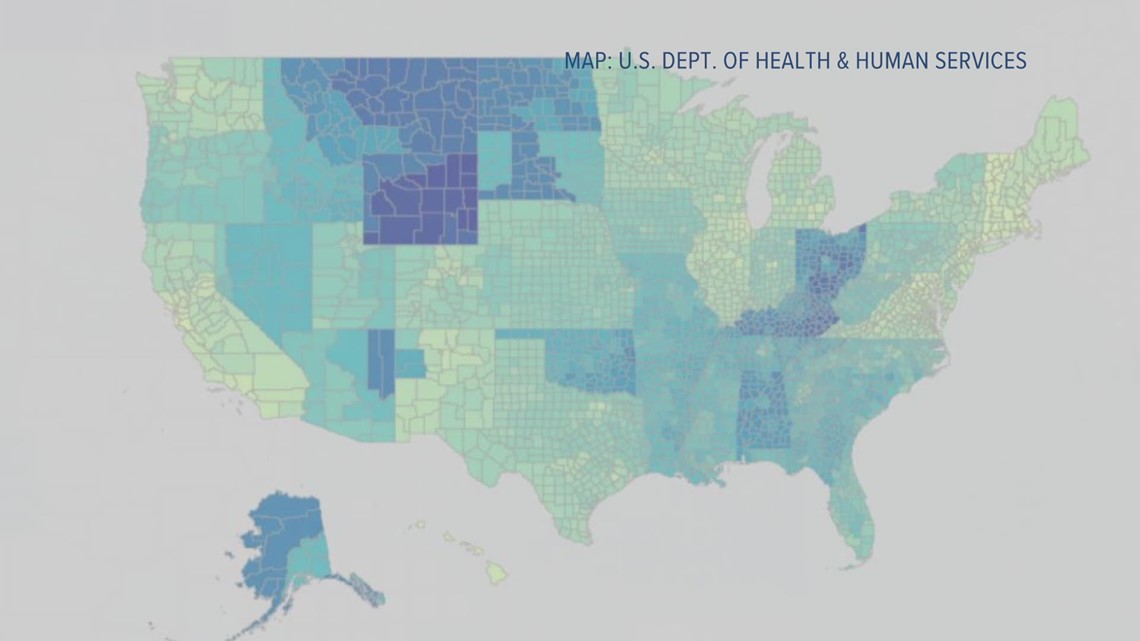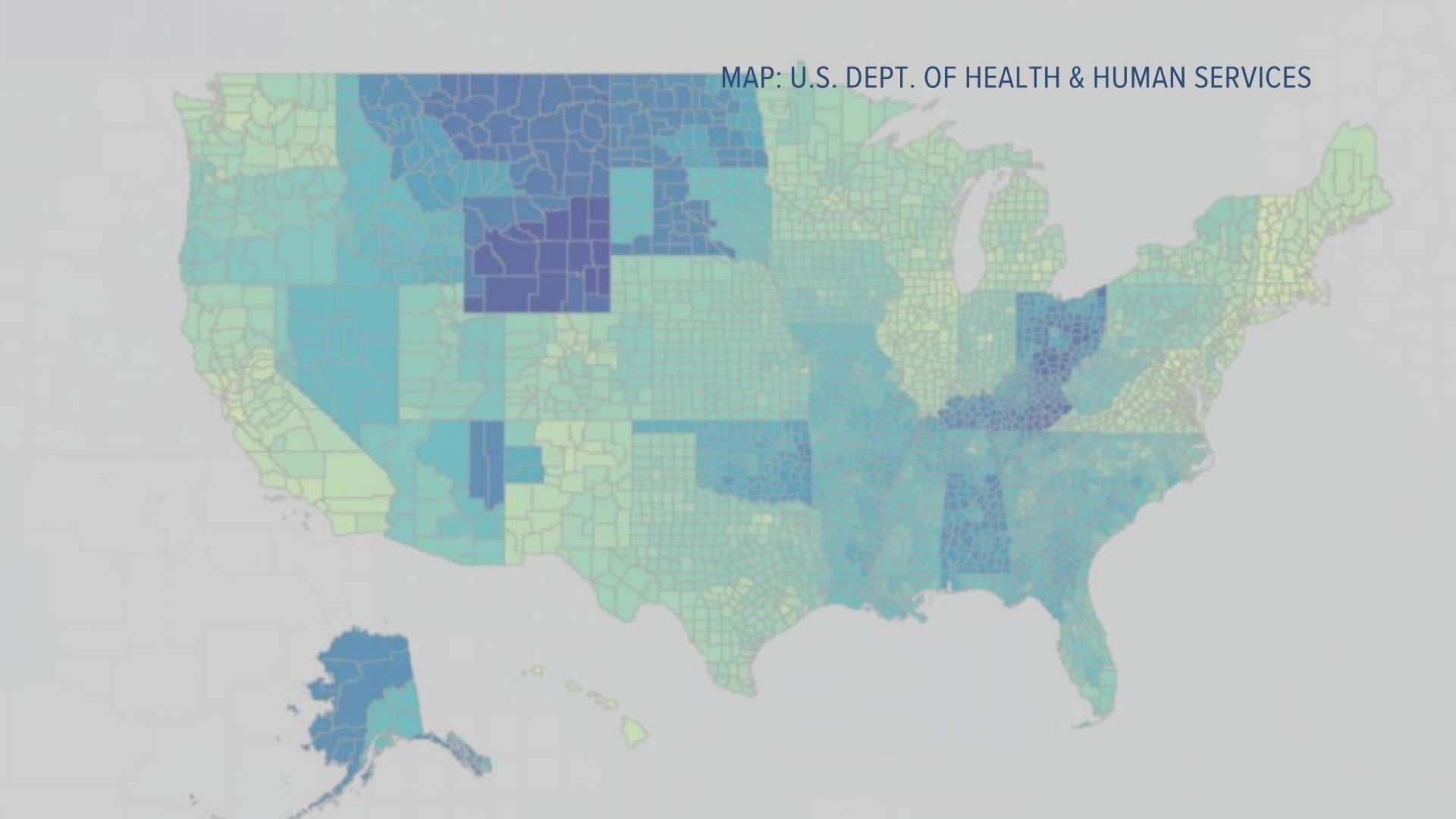ST. LOUIS — A map using US Census data and other analysis from the U.S. Department of Health and Senior Services tracks vaccine hesitancy by county.
In the St. Louis area, people are less hesitant about getting the shot on the Illinois side of the river. Just over 34% of people in St. Charles (34.71%) and St. Louis counties (34.3%) are hesitant to some degree; St. Louis city (41.2%) and outlying counties have higher rates of holdouts.
“Those rates of hesitancy have actually dropped rather significantly than this time last year when we were doing similar surveys,” said Dr. Rachel Charney, a pediatric emergency medicine specialist with SSM and member of the Metropolitan Pandemic Task Force. “So I think the more information people get, the more comfortable they feel with vaccine.
Dr. Charney said a few factors are at play. First: not all information is good information.
“There’s a lot of misinformation that is very easily spread around and some of it sounds extremely convincing,” she said.
In the HHS map below, the darker colors indicate higher vaccine hesitancies; the lighter colors indicate lower hesitancy rates.


It’s a driving force behind issues in St. Francois County, where more than 52% of the population reports some degree of hesitancy.
“Vaccine hesitancy in community continues for various reasons: COVID conspiracy theories/trust in government/belief the vaccine was made too fast and have concern regarding safety/fear of side effects,” said Linda Ragsdale of the St. Francois County Health Department in an email. “Misinformation spreads quickly, it is very difficult to get ahead of it.”
“We’re working with the organizations in the communities who these people trust to help us get the message to them,” said a Pandemic Task Force spokesperson in an email. “It also helps us debunk any myths they’ve heard or read about the vaccine.”
Another cause for hesitancy, according to health officials: access.
“There are some people who don't yet quite know where to go or feel like they or haven't had as much access as others,” said Dr. Charney. “And for some, transportation can be a gigantic issue. And that's why the pandemic task force is beginning to shift away from those large harder to get to mass vaccinations, which are ideal for reaching a large part of the population quickly, and focusing more on partnerships with our federally qualified health care centers, partnerships with our schools, partnerships with those groups where people are engaging on a regular basis.”


Access also means being able to make an appointment, having time and availability to get there, and being able to take time off of work, childcare, and other responsibilities in case of side effects.
“If you see a neighbor that you think maybe hasn't had a chance yet and has a lot of kids in child care difficulties: ‘Hey, can I watch your kids and help you out so you can go get vaccinated today?'” suggested Dr. Charney. “You know, bringing a meal to someone who is feeling unwell after vaccines. How can we help each other?”
In Jefferson County, where 43% of the population is reluctant to get the shot, the health department is launching a new campaign based on those community values: "Why I Vaxxed" shares stories of community members deciding to roll up their sleeves.
“Our whole campaign is just for the greater good of Jefferson County, because ultimately, at the end of the day, that's what that's what it's about,” said Brianne Zwiener.
Working in communications for the Jefferson County Health Department, Zwiener said it’s a balance working to celebrate the ways in which we are “returning to normal,” and continuing to stress COVID safety needs. That also includes masking, social distancing, and perhaps even regular testing for those who don’t get the shot.
“We would encourage people to get vaccinated. But I mean, the reality is we know that that's probably not going to be something that everyone does,” she said. “So we just try to push as much information and as much of the prevention as possible, because ultimately our goal is to get Jefferson County in that green status and we so close. So we just got to keep chugging along and put in the work.”

